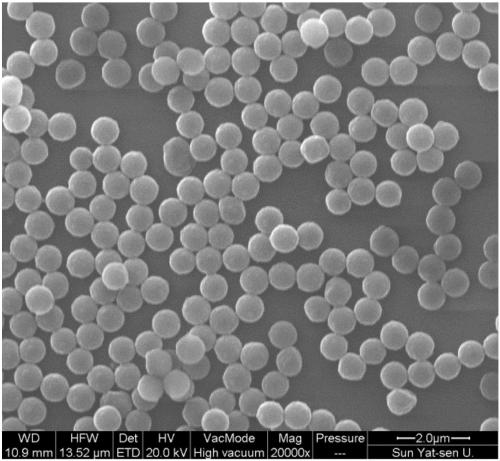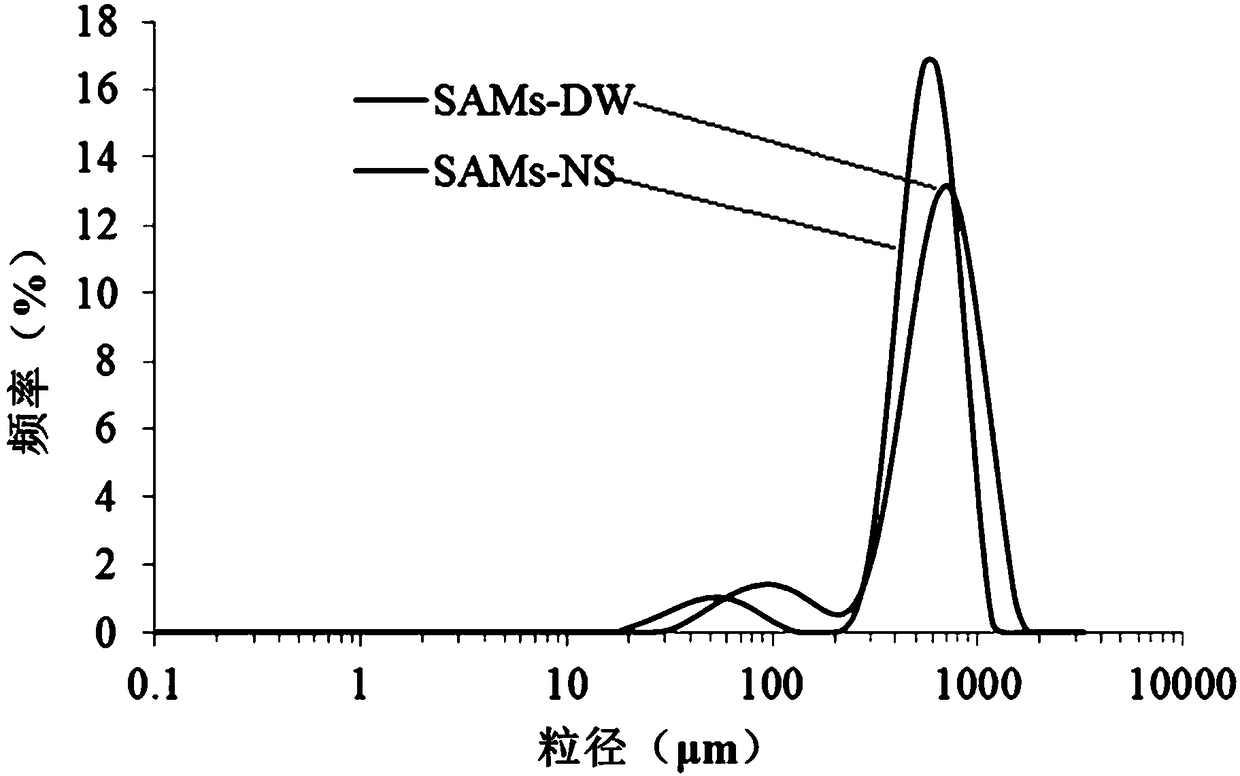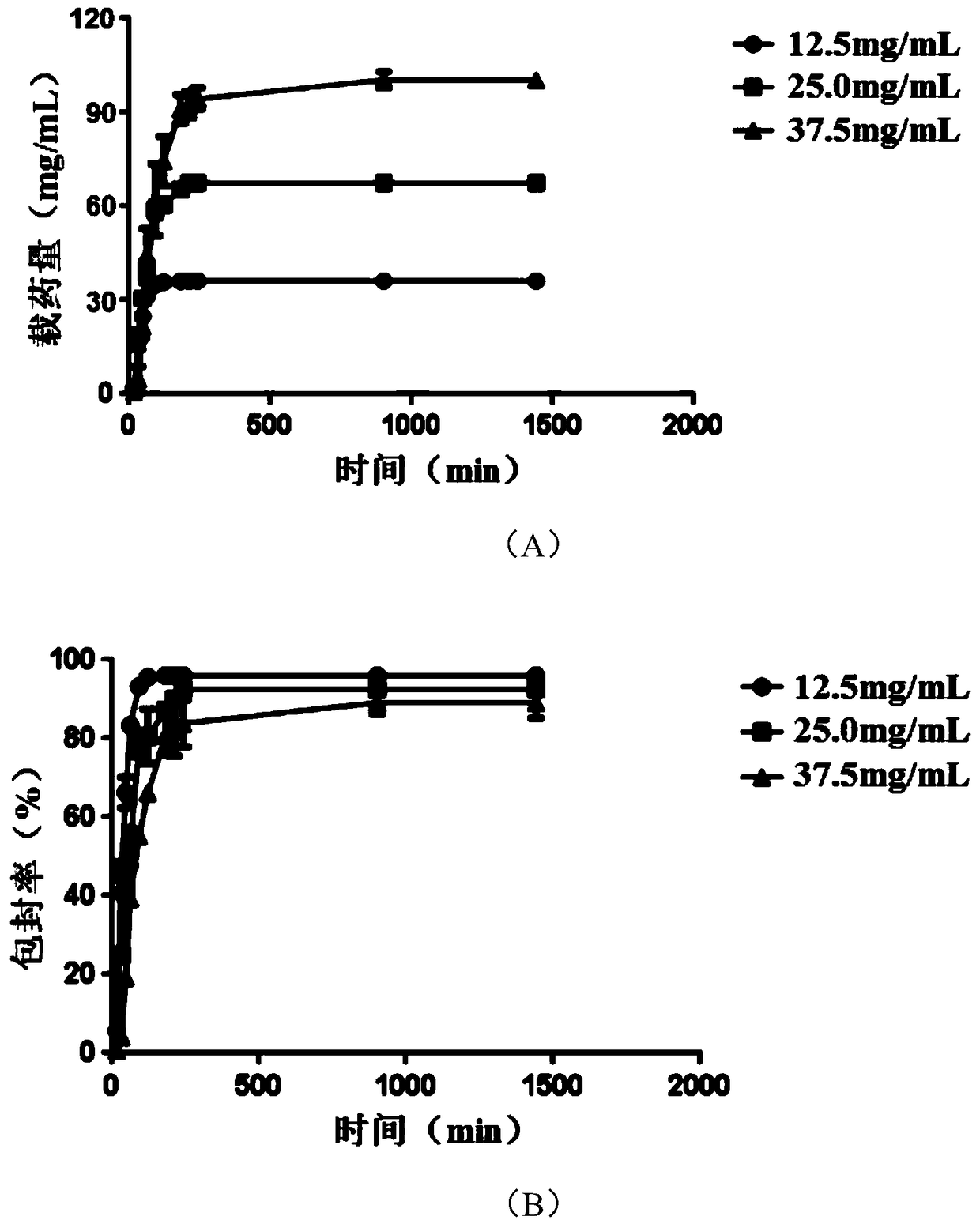Sodium alginate polymer, novel sodium alginate blood vessel embolism chemotherapy composition, and preparation method and application thereof
A sodium alginate and vascular embolization technology, which is applied in the field of interventional medicine, can solve the problems of complex embolization operation of emulsion-embolizing agent, inability to complete chemoembolization treatment in one step, and increase adverse reactions, etc., and achieves good drug sustained release effect and is suitable for large-scale The effect of industrialized production and high drug encapsulation efficiency
- Summary
- Abstract
- Description
- Claims
- Application Information
AI Technical Summary
Problems solved by technology
Method used
Image
Examples
Embodiment 1
[0040] Embodiment 1: the preparation of microsphere
[0041] Using the reverse phase suspension polymerization method, add 60mL of liquid paraffin and 60mg of Span 80 into the three-necked flask, blow nitrogen to drive oxygen, and then dissolve 4.0g of sodium alginate, 2.0g of acrylic acid, 60mg of N,N'-methylene Add bisacrylamide (crosslinking agent) and 60mg potassium persulfate (initiator) solution dropwise to the oil phase at 70°C. After pre-crosslinking for 15 minutes, add 60mg tetramethylethylenediamine (catalyst) and stir at 250rpm After reacting for 2.5 hours, separate the microspheres, wash them, and sieve out different specifications according to the particle size. -1250μm and >1250μm) microspheres (SAMs). The shape, size and adhesion were observed under an optical microscope. After the 700-900μm microspheres were dried, they were scanned by SEM, and the results were as follows figure 1 shown. The dried microspheres are round particles, regular in shape, similar ...
Embodiment 2
[0042] Embodiment 2: the particle size distribution investigation of microsphere
[0043] Take the microsphere SAMs prepared in Example 1, disperse them in deionized water (DW) or normal saline (NS), and use a laser scattering particle size analyzer to test their average particle size and particle size distribution. The average particle size measured in DW or NS is 632.7μm and 555.1μm respectively, and the particle size distribution is basically normal distribution. The results are as follows figure 2 shown.
Embodiment 3
[0044] Embodiment 3: Preparation of malic acid-loaded sunitinib microspheres
[0045] Get each 1mL of the wet microspheres of each particle size range that embodiment 1 makes respectively, after absorbing the surface moisture, place in the sunitinib malate solution of 25.0mg / L, after soaking at room temperature for 2 hours, use Wash off the unexchanged drug on the surface with ion water.
PUM
| Property | Measurement | Unit |
|---|---|---|
| The average particle size | aaaaa | aaaaa |
| Particle size | aaaaa | aaaaa |
Abstract
Description
Claims
Application Information
 Login to View More
Login to View More - R&D
- Intellectual Property
- Life Sciences
- Materials
- Tech Scout
- Unparalleled Data Quality
- Higher Quality Content
- 60% Fewer Hallucinations
Browse by: Latest US Patents, China's latest patents, Technical Efficacy Thesaurus, Application Domain, Technology Topic, Popular Technical Reports.
© 2025 PatSnap. All rights reserved.Legal|Privacy policy|Modern Slavery Act Transparency Statement|Sitemap|About US| Contact US: help@patsnap.com



